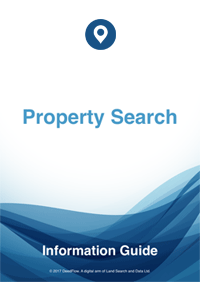Obtain Copy Wayleave Agreement
Contents
Article Summary
A wayleave agreement is a contractual document authorising the party in whose favour it is made (the grantee) to enter on private land owned by the grantor in order to carry out work, e.g. to install and maintain equipment, for the benefit of third parties. It is normal for annual payments to be made to the grantor. This article discusses the importance of checking if your property has any wayleave agreements and how to obtain copies of them.
What is a Wayleave Agreement?
A wayleave agreement is a document, usually in the form of a licence, that will legally bind the parties to it. It authorises the grantee to enter private land owned by the grantor, to carry out work for the benefit of third parties on the grantor's land, usually in return for annual payments. When the need for it ceases the licence will usually be terminated.
It differs from an easement in so far as easements can only be made between adjoining land owners. An easement is also registrable as a legal interest at the Land Registry, whereas a wayleave is not, although since 2002 they must now be disclosed on an application to register the property, which means that they will be noted on the register as an overriding interest.
Wayleave agreements are often made by utility and power companies, e.g. electricity companies, telecoms and other companies that offer services that require the installation and the maintainance of underground, surface, or overground cabling, piping, pylons, mobile masts, etc.
Wayleave agreements may bind subsequent purchasers of the property as well as the grantor, and therefore the nature and extent of the agreement should be carefully looked at.
Electricity Act 1989 (Schedules 3 and 4, and Sections 4 and 10)
The effect of the above, in brief, is that private land owners, when requested by an electricity company to provide a wayleave agreement may not refuse the request, and the wayleave agreement will continue for so long as the electricity company require it to, even if there is a change in ownership of the land.
Although the land owner can refuse his consent the electricity company can invoke compulsory procedures to obtain the same.
Where an electricity company considers the wayleave agreement to be a "Necessary Wayleave" it may apply under section 4 of the Act for a compulsory wayleave.
Overriding Interest
A wayleave agreement is an overriding interest, which means that until the Land Registration Act 2002 it would not have been disclosable to the Land Registry on an application to register the Title. Since the 2002 Act and the 2003 Land Registration Rules this will depend on whether the type of overriding interest appears in the Rules' lists of overriding interests that should not be disclosed. Wayleave agreements do not appear in these lists and accordingly should be disclosed.
Accordingly, where wayleave agreements are in existence they will be disclosed to the Land Registry, and copies will be retained.
Obtaining a copy of Wayleave Agreements
Wayleave agreements must be disclosed to the Land Registry on application for a change of registration and copies can be obtained, if there are any, by obtaining a Associated Documents Search. In order to ascertain if such a document is available from the Land Registry you should look at your Title Register to see if the wayleave is referred to, which would normally be the case. At the foot of the paragraph referring to it will be a note that it has been copied (if it has), which means that a copy is available for purchase.
Associated Documents
Deeds creating Restrictions, Covenants, Easements, etc. are often kept digitally by the Land Registry and made available for sale due to their invaluable detail and content to assist in further understanding the Restrictions, etc.
£29.95Title Register
The Land Registry Title Register holds data relating to the property ownership, purchase price, mortgage, tenure, covenants, rights of way, leases and class of title.
£19.95Title Plan
The Title Plan shows an outline of the property and its immediate neighbourhood, and uses colours to identify rights of way, general boundaries and land affected by covenants.
£19.95


